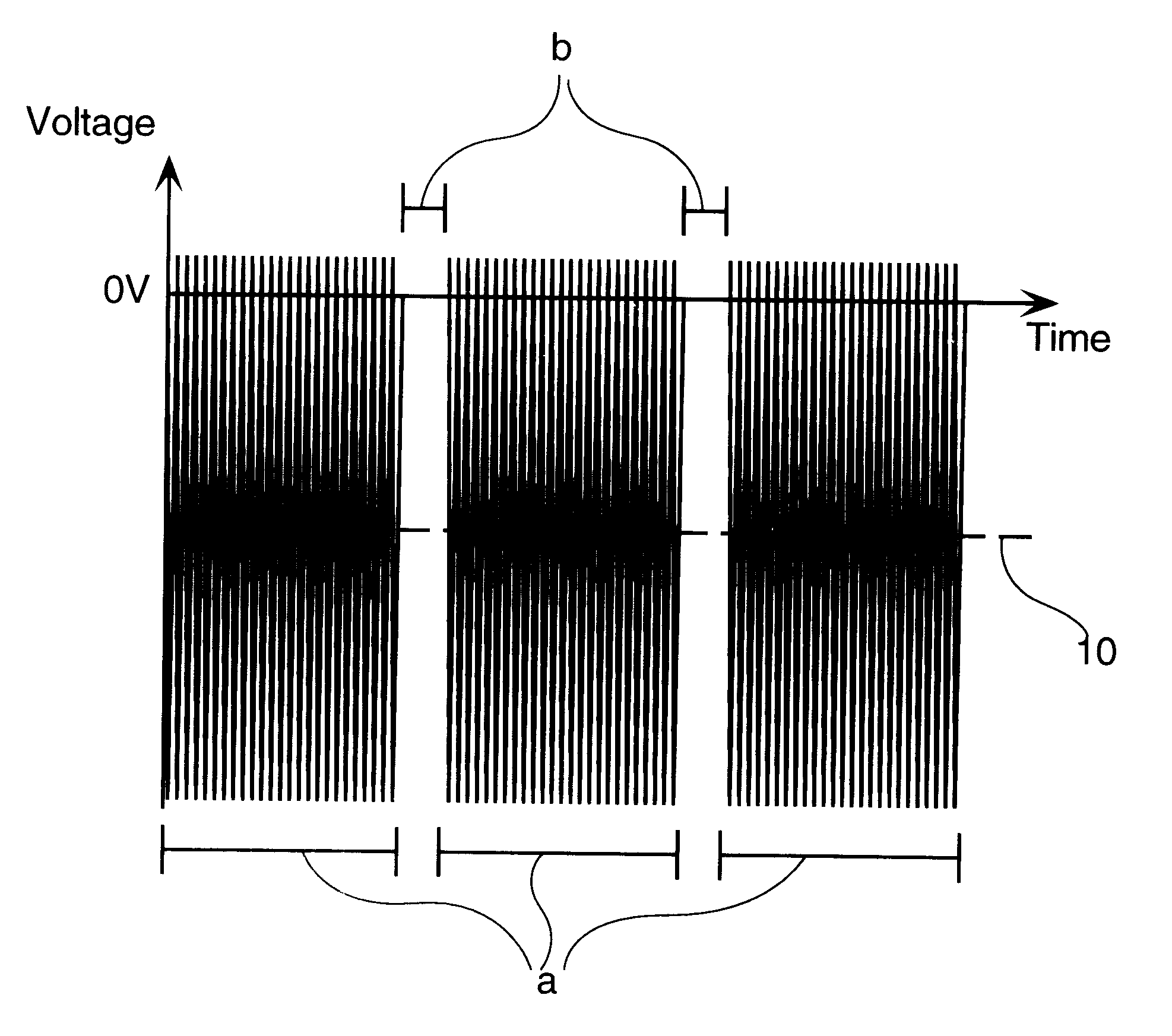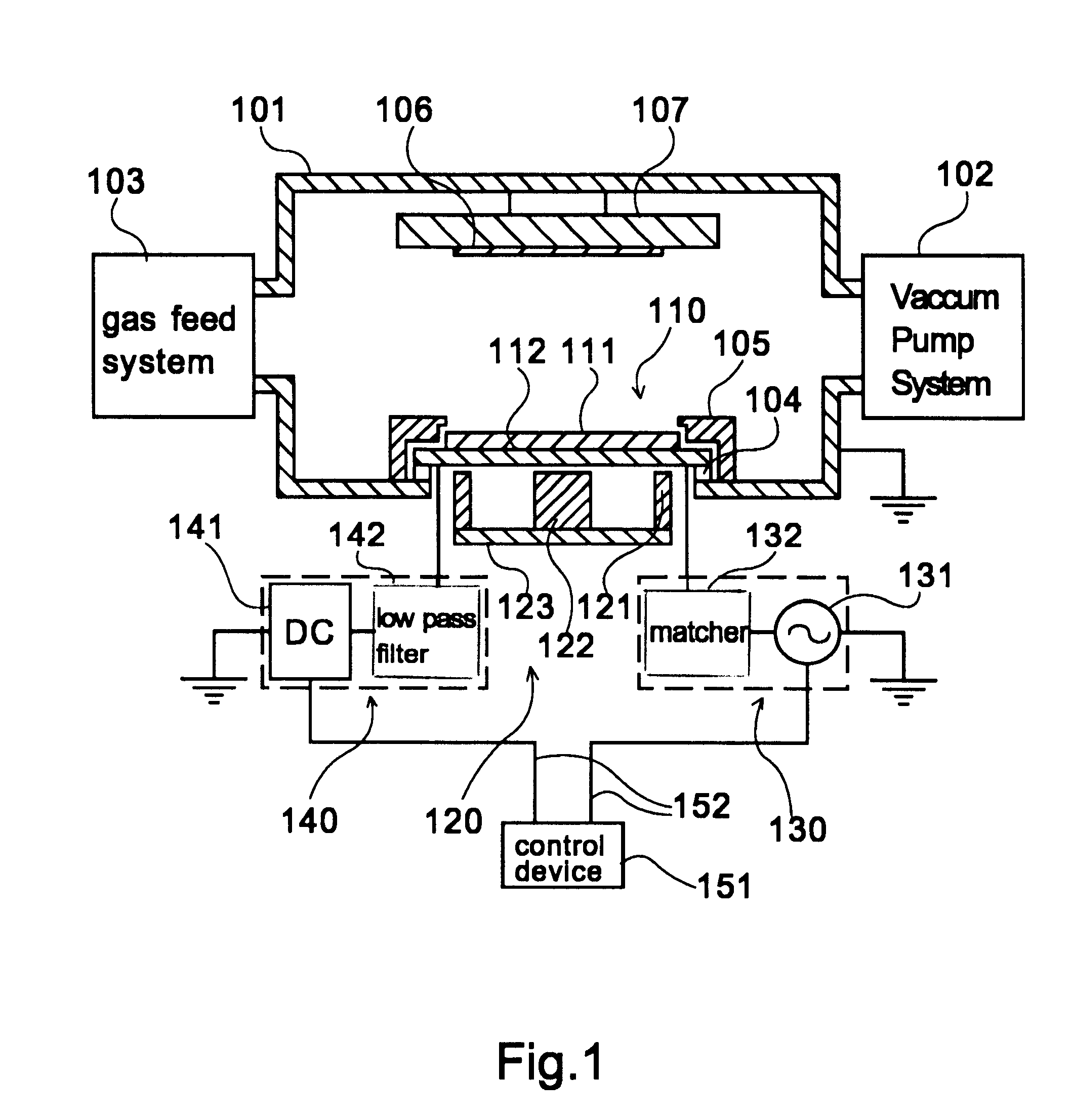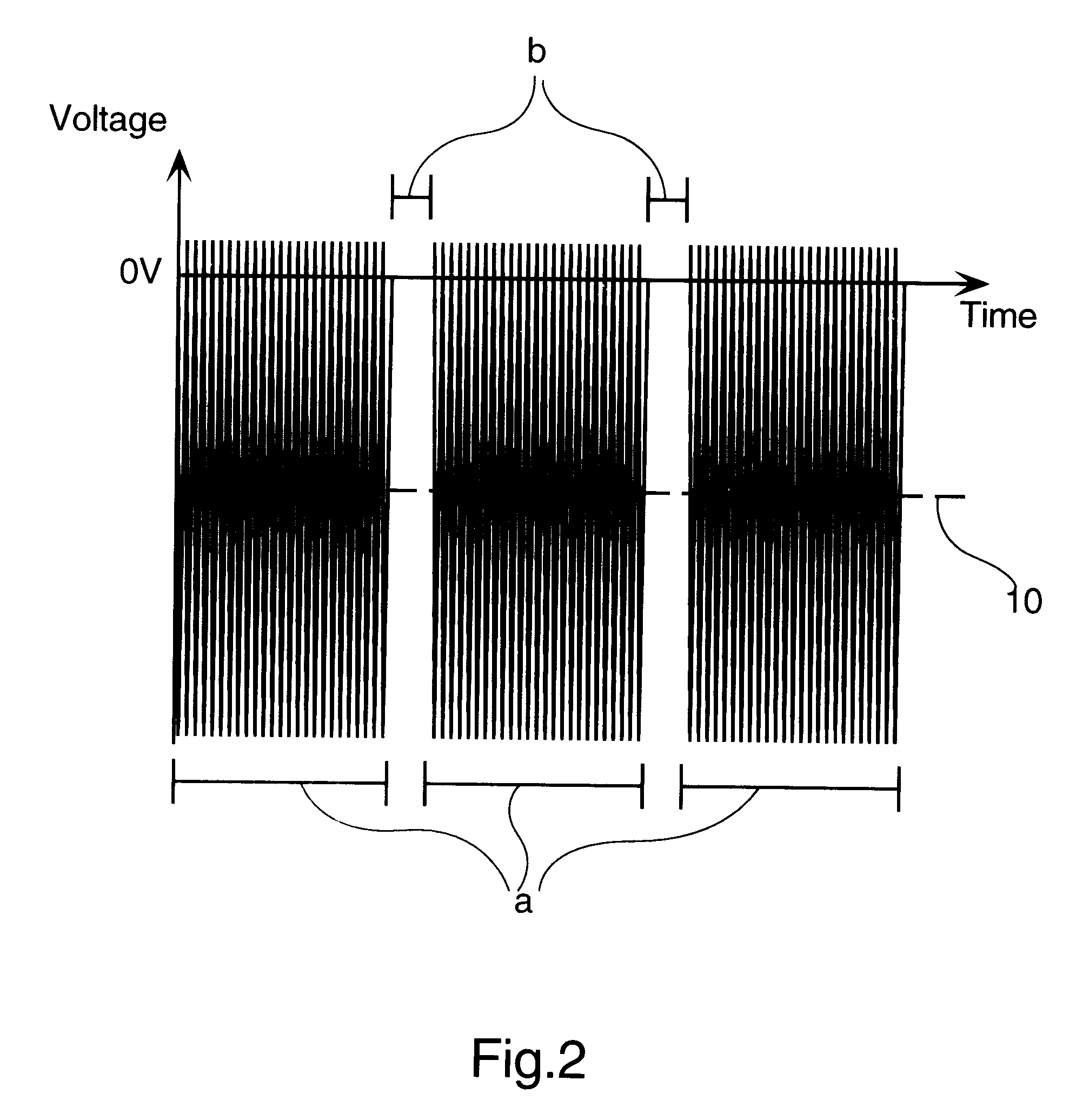Combined RF-DC magnetron sputtering method
a magnetron sputtering and rf technology, applied in the field of manufacturing thin films, can solve the problems of negatively charged extremity large clusters and continue to be, and achieve the effects of suppressing cluster growth, reducing plasma density, and reducing the supply of rf power
- Summary
- Abstract
- Description
- Claims
- Application Information
AI Technical Summary
Benefits of technology
Problems solved by technology
Method used
Image
Examples
first embodiment
the combined RF-DC magnetron sputtering method related to the present invention using the aforementioned sputtering device is described below. In this method, a mixture of In and Sn oxides is used as the target 111 to form an ITO transparent conductive film on the substrate 106.
A sintered target (95% density) obtained by the addition of 10 wt % SnO.sub.2 to In.sub.2 O.sub.3 is used as the target 111. Over the target 111, the magnetic field intensity is, for example, about 300 Gauss parallel to the target while the magnetic field component perpendicular to the target surface (the upper surface of the target in FIG. 1) is zero. A mixed gas of O.sub.2, mixed in a suitable amount (when ITO thin films are deposited by altering the amount of O.sub.2 gas introduced, which is the amount resulting in the lowest film specific resistivity) with argon gas, is used for the sputtering gas. The film forming pressure is 0.4 Pa. Under these conditions, the desired time modulated power is supplied fr...
second embodiment
the present invention is described below. The structure and conditions of this embodiment are the same as those in the first embodiment, except for the mode of the power supply. In this embodiment, the RF and DC power supplied to the target are synchronized and periodically reduced. FIG. 3 depicts the waveform of the voltage applied to the target 111 in the present embodiment. Symbol c in FIG. 3 is the period of ordinary power supply, and d is the period in which the power is periodically reduced. In period c, the RF and DC power have a power density of 1.5 and 0.5 W / cm.sup.2, respectively, with a time of 5 msec. In period d, the RF and DC power have a power density of 0.3 and 0.1 W / cm.sup.2, respectively, with a time of 1 msec. The dotted line 20 and dashed line 30 in FIG. 3 indicate the mean voltage for the target in periods c and d, respectively, i.e., is, the Vt in each period. FIG. 3 visually depicts the fact that the periods c and d are alternating waveforms. There is no direc...
third embodiment
the present invention is described below. The structure and conditions of this embodiment are the same as those in the first and second embodiments except for the mode of power supply.
It was found that discharge could not be maintained at or below -280 V (the lower absolute value) because of the current-voltage properties in discharge with DC power alone. In the present embodiment, a constant voltage regulated power source is used as the DC power source 141 shown in FIG. 1. The set voltage of the constant voltage regulated power source is set at no more than the voltage needed to maintain discharge (the lower absolute value), for example, -100 V, during discharge by DC power alone, and the power supply from the RF power source 131 is periodically stopped for a constant time, based on the control device 151. FIG. 4 depicts the waveform of the voltage applied to the target 111 in the present embodiment. The symbol e in FIG. 4 is the period in which RF power is supplied with controllin...
PUM
| Property | Measurement | Unit |
|---|---|---|
| time | aaaaa | aaaaa |
| pressure | aaaaa | aaaaa |
| oscillating frequency | aaaaa | aaaaa |
Abstract
Description
Claims
Application Information
 Login to View More
Login to View More - R&D
- Intellectual Property
- Life Sciences
- Materials
- Tech Scout
- Unparalleled Data Quality
- Higher Quality Content
- 60% Fewer Hallucinations
Browse by: Latest US Patents, China's latest patents, Technical Efficacy Thesaurus, Application Domain, Technology Topic, Popular Technical Reports.
© 2025 PatSnap. All rights reserved.Legal|Privacy policy|Modern Slavery Act Transparency Statement|Sitemap|About US| Contact US: help@patsnap.com



